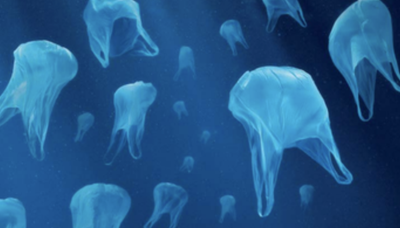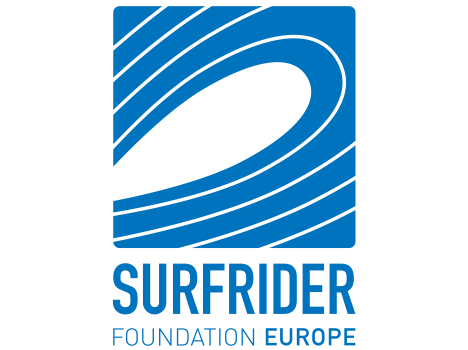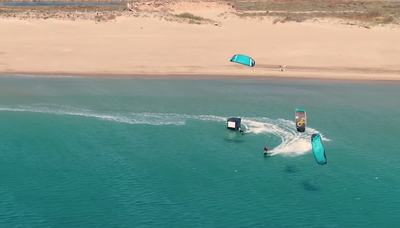The ocean and the plastic problem
Introduction
I N T R O D U C T I O N : M A R I N E D E B R I S A N D T H E P L A S T I C P R O B L E M
Of all the marine debris present in our oceans, plastic is the most common 1. Every year, eight million tonnes of plastic waste flow from land to sea 2. In certain parts of the globe, plastic represents up to 95% of the total marine debris 3. This omnipresence of plastic in our oceans is due to constantly increasing industrial production. In 1950, world plastic production stood at 1.5 million tonnes. In 2015, it was 322 million 4.
This increase in production is due to plastic being so cheap, resistant and easy to produce. Plastic lives on long after it has been thrown away and a large part of all plastic produced is designed for single use. A minute portion of plastic is recycled. The rest ends up either in landfill or in our environment. Plastic never fully degrades. Instead, it becomes fragmented into tiny particles, barely visible to the naked eye. These ‘microplastics’ are difficult to detect and impossible to remove completely from the environment.
How marine debris is created ?
WHAT IS MARINE DEBRIS ?
Be it plastic, glass, fabric or metal, all litter is created by human activity. Marine litter is defined as: ‘any object or material produced by man which, directly or indirectly, ends up in the ocean 5. Marine debris is solid and resistant, be it floating, stranded or submerged. It’s classified according to its size and can be ‘macro-waste’ (>5mm) or ‘micro-waste’ (<5mm) 6.
MARINE DEBRIS - WHERE DOES IT COME FROM ?
The debris mainly comes from inland regions. It’s transported by wind, rain and waterways to the ocean. Between 1.15 and 2.41 millions of tonnes of plastic flow from rivers into the ocean every year 7. During storms or heavy rains, water levels rise, sweeping away litter from the shore. As they travel through agricultural, industrial and urban areas, waterways pick up a multitude of litter (food packaging, tin cans, cigarette butts, etc...). In towns and cities, water treatment infrastructure can become overloaded, meaning untreated waste water ends up in the local ecosystem. Fish farming, fishing and maritime transport also contribute to the waste abandoned on beaches or out at sea.
The movement of marine debris in the ocean
WHAT HAPPENS TO LITTER ONCE IT’S IN THE OCEAN ?
Litter transported by wind, rain and waterways finds its way into the ocean. A tiny part of this waste drifts onto our beaches, but the majority of it sinks to the bottom of the ocean 8. Floating debris can be carried by ocean currents across sometimes remarkable distances. Of all this debris, plastic is the most problematic for the environment. It becomes fragmented into micro particles by the UV effect and micro bacteria 9. Today there are over 5000 billion plastic particles floating in our oceans 10. Marine currents play a crucial role in the transport and distribution of ocean waste on a global scale. This is why certain waste products can be found in areas with little or no human activity. Large quantities of plastic debris can be found in the Arctic, for example. Ocean currents are essentially highways for litter.
A S E V E N T H C O N T I N E N T O F W A S T E ?
The Seventh Continent, also called the Great Pacific Garbage Patch, is a zone where floating debris converges, situated in the North Pacific between California and Japan. There are 5 such meeting points or ‘gyres’ on earth. Taking the form of a plastic soup, these gyres are essentially made up of plastic particles smaller than 5mm. It is estimated that the Great Pacific Garbage Patch or Seventh Continent could contain between 45 and 129 thousand tonnes of waste 11.
The impact of marine debris in sea life
WHAT IS THE IMPACT ON SEA LIFE ?
Floating on the surface, lining the ocean floor or washed up on the beach, marine debris threatens aquatic ecosystems. It can injure many marine species by hindering their mobility. Marine debris can also transport invasive species or harbour numerous contaminants. This pollution of the seas and oceans has a profound impact on all sea life. Today there are 693 marine species directly threatened by plastic pollution 12.
Marine debris can work as a lure for ocean fauna, who confuse it with their usual prey. Certain turtles, for example, mistake plastic bags for jellyfish and can choke on them if swallowed. Many sea birds confuse plastic with food. It is estimated that 90% of sea birds have plastic fragments in their stomachs. By 2050, this could reach 99% if effective measures are not taken to reduce the flow of plastic entering the ocean 13.
- Ingestion, etranglement and injuries
Marine fauna (birds, fish... ) become entangled in different types of debris, causing injury, drowning and immobilisation. This can impede the animal from feeding itself or breathing and cause its death. Abandoned or lost fishing nets, for example, continue to trap thousands of fish, turtles, birds and marine mammals. This phenomenon is called ‘phantom fishing’. It’s estimated that abandoned or lost fishing material amounts to 640,000 tonnes of waste 14.
- Transporting invasive species
Floating waste which drifts along ocean currents helps transport invasive species. These are generally molluscs or algae but can also be microbes that attach themselves to the litter. They can sometimes find themselves thousands of kilometres from where they started out. This phenomenon deeply disrupts local ecosystems.
- Concentration of contaminants
Microplastics, found in great number at sea, accumulate a range of contaminants. These contaminants can prove toxic for the marine animals who ingest them.
Conclusion
Plastic waste, now everywhere in our environment, stems from human activity that has been steadily increasing since 1950. Today, we produce 200 times more plastic than we did 70 years ago. That’s 8 million tonnes of waste poured into the sea every year. This pollution is having a substantial impact on biodiversity. This influx of plastic puts all marine life in danger. There are 693 marine species directly threatened by plastic pollution. According to a recent Australian study, 9 out of 10 birds have plastic in their stomach.
There are many possible solutions to the issue. Acting directly at the source of the pollution is still the most effective method. Reducing our daily consumption of plastic is something everyone can do individually. Discover our educational pack here to help you limit your plastic consumption and protect the ocean.
Sources
1. Barnes, D. K., Galgani, F., Thompson, R. C., & Barlaz, M. (2009). Accumulation and fragmentation of plastic debris in global environments. Philosophical Transactions of the Royal Society of London B: Biological Sciences, 364(1526), 1985-1998.
2. Jambeck, J. R., Geyer, R., Wilcox, C., Siegler, T. R., Perryman, M., Andrady, A., ... & Law, K. L. (2015). Plastic waste inputs from land into the ocean. Science, 347(6223), 768-771.
3. Ioakeimidis, C., Zeri, C., Kaberi, H., Galatchi, M., Antoniadis, K., Streftaris, N., ... & Papatheodorou, G. (2014). A comparative study of marine litter on the seafloor of coastal areas in the Eastern Mediterranean and Black Seas. Marine Pollution Bulletin, 89(1-2), 296-304.
4. Plastics Europe. Plastics–the facts 2016: an analysis of European plastics
5. Henry, M. (2010). Pollution du milieu marin par les déchets solides : Etat des connaissances. Perspectives d’implication de l’Ifremer en réponse au défi de la Directive Cadre Stratégie Marine et du Grenelle de la Mer.
6. Wright, S. L., Thompson, R. C., & Galloway, T. S. (2013). The physical impacts of microplastics on marine organisms: a review. Environmental pollution, 178, 483-492.
7. Lebreton, L. C., Van der Zwet, J., Damsteeg, J. W., Slat, B., Andrady, A., & Reisser, J. (2017). River plastic emissions to the world’s oceans. Nature communications,
8, 15611. 8. Galgani, F., Poitou, I., & Colasse, L. (2013). Une mer propre, mission impossible?: 70 clés pour comprendre les déchets en mer. Editions Quae.
9. Lambert, S., Sinclair, C., & Boxall, A. (2014). Occurrence, degradation, and effect of polymer-based materials in the environment. In Reviews of Environmental Contamination and Toxicology, Volume 227 (pp. 1-53). Springer, Cham.
10. Eriksen, M., Lebreton, L. C., Carson, H. S., Thiel, M., Moore, C. J., Borerro, J. C., ... & Reisser, J. (2014). Plastic pollution in the world’s oceans: more than 5 trillion plastic pieces weighing over 250,000 tons afloat at sea. PloS one, 9(12), e111913.
11. Lebreton, L., Slat, B., Ferrari, F., Sainte-Rose, B., Aitken, J., Marthouse, R., ... & Noble, K. (2018). Evidence that the Great Pacific Garbage Patch is rapidly accumulating plastic. Scientific reports, 8(1), 4666. Gall, S. C., & Thompson, R. C. (2015). The impact of debris on marine life. Marine pollution bulletin, 92(1-2), 170-179.
12. Gall, S. C., & Thompson, R. C. (2015). The impact of debris on marine life. Marine pollution bulletin, 92(1-2), 170-179.
13. Wilcox, C., Van Sebille, E., & Hardesty, B. D. (2015). Threat of plastic pollution to seabirds is global, pervasive, and increasing. Proceedings of the National Academy of Sciences, 112(38), 11899-11904.
14. Macfadyen, G., Huntington, T., & Cappell, R. (2009). Abandoned, lost or
otherwise discarded fishing g
FAQ
What is polluting our oceans?
Waste generated by human activity is causing extensive pollution of the world's oceans and putting all marine life at risk. Every year, more than 8 million tonnes of waste make their way from land to ocean. All aquatic waste is generated by humans and 80% of it is made up of plastic materials.
How does plastic end up in the oceans?
Most waste is generated on land and is then carried by the wind, rain and watercourses to the ocean. The systems for filtering the water before it reaches the ocean are often overloaded, particularly during stormy weather. Between 1.15 and 2.41 million tonnes of plastic pour into the ocean from rivers every year.
What are the consequences of marine pollution?
There are 693 marine species that are directly threatened by plastic pollution. It is estimated that nine out of 10 sea-birds today have plastic fragments in their stomachs.
Marine pollution has various consequences. The main risk is that marine wildlife will ingest aquatic waste, which they mistake for their usual prey. Other possibilities include marine wildlife becoming entangled or injured, invasive species being introduced and suffocation of the seabed.





